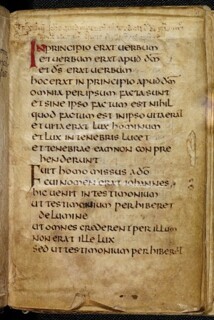In the Z Safe
Mary Wellesley
Somewhere in the inner recesses of the British Library is a place called the Z Safe. The physical safe doesn’t exist anymore, though it did when the national bibliographic collection was housed in the British Museum. In those days it was a Chubb strong room beneath the west stairs in the Department of Manuscripts. Now, ‘Z Safe’ is a category given to the most valuable manuscripts, but I like to imagine it as still an actual place, a holy tabernacle in the bibliophiles’ temple.
The category includes the Beowulf manuscript, the Lindisfarne Gospels, Captain Scott’s diary, Leonardo da Vinci’s notebooks and the 7th-century St Cuthbert Gospel, the oldest surviving book in Europe, acquired two years ago for the knockdown price of £9 million (around one-ninth of Gareth Bale).
Manuscripts are designated Z Safe if they either extremely fragile or extremely valuable and cannot be handled, even by the library’s own curators, except for exceptional reasons. And it isn’t only manuscripts in there. I’m told there are some Winnie the Pooh plasticine figures too.
There is no published list of the Z Safe manuscripts. And finding out anything about how they are kept is close to impossible. And rightly so: many of them have narrowly escaped destruction in their long history and need to be closely and secretively guarded. The St Cuthbert Gospel only survived because it was buried alongside Saint Cuthbert, tucked up next to his decaying corpse until 1104 when his bones were transferred to Durham. During the intervening centuries a series of Viking incursions had all but destroyed the great monastic libraries of the north of England, and this small book (5.4 in × 3.6 in) was almost all that was left.
The Beowulf manuscript, shelfmark Cotton MS Vitellius A.XV (it came from the collection of the Elizabethan antiquarian Robert Cotton, who stored it in a bookcase with a bust of the Roman emperor Vitellius on top), also narrowly escaped destruction. On 23 October 1731, when Cotton’s collection was temporarily stored in the ominously named Ashburnham House, a fire broke out. Many manuscripts were lost or badly damaged. The edges of the Beowulf manuscript are charred and its vellum is now extremely brittle. The next day, boys from Westminster School gathered up the fragments that littered Dean’s Yard and kept them as souvenirs. The British Library still houses many fragments that have yet to be identified.
